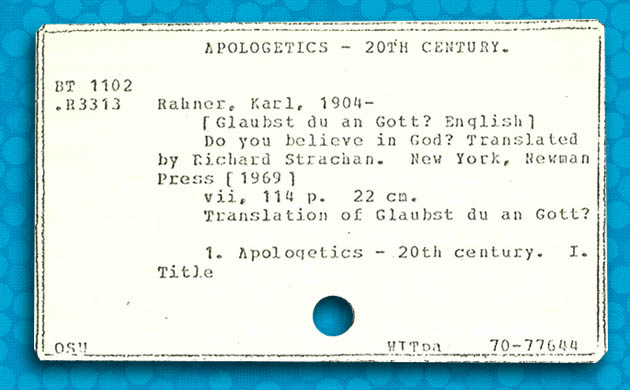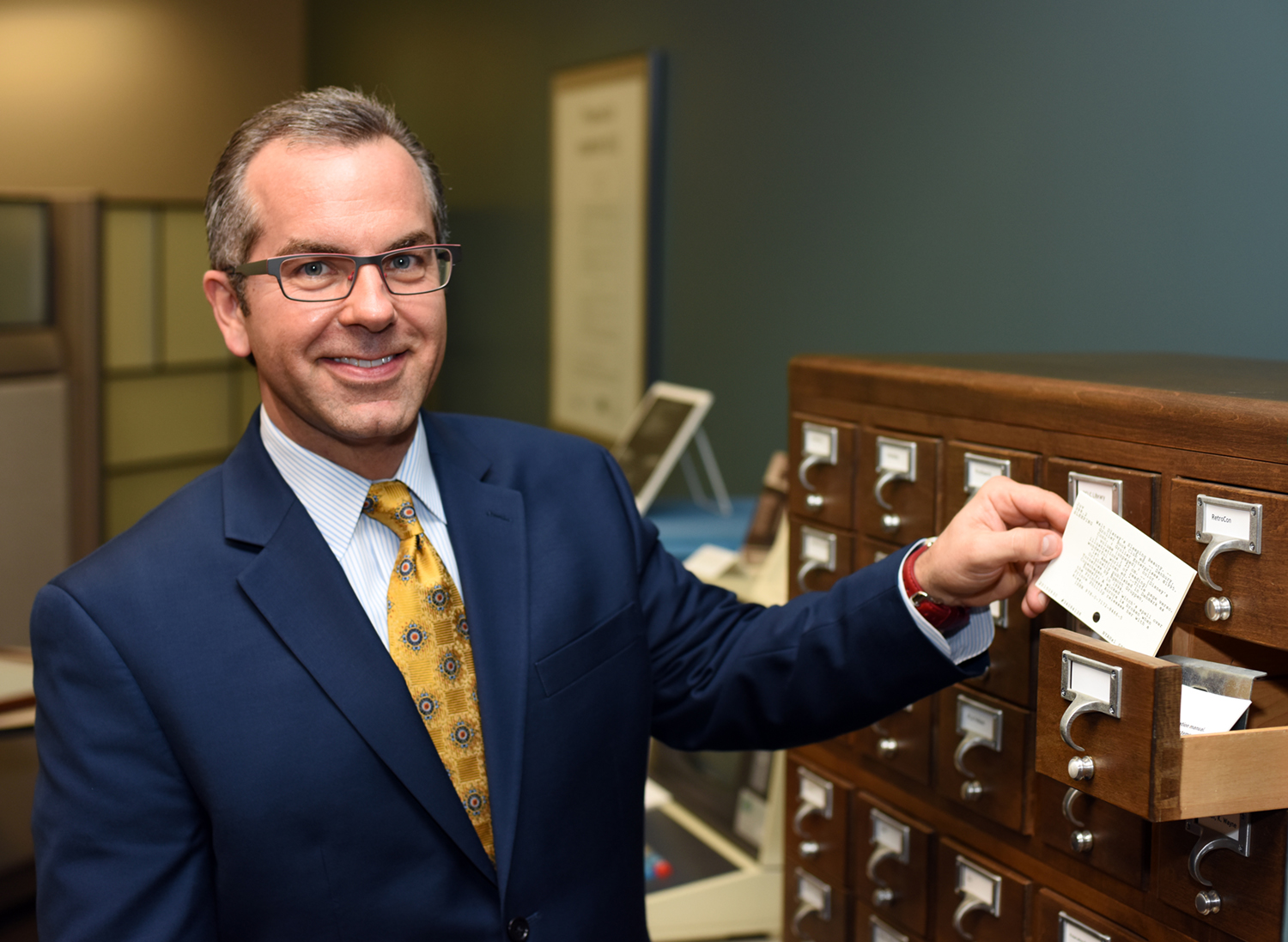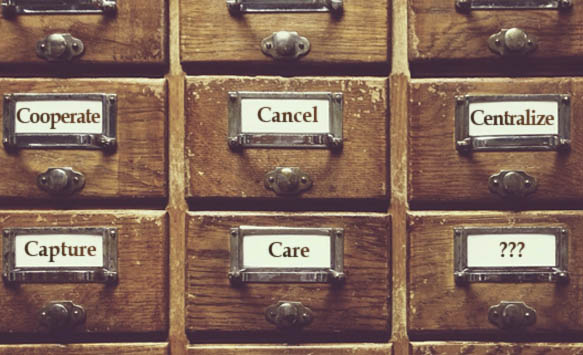The end of an era
Earlier today, OCLC said “goodbye” to a service that it had been performing since the early 1970’s: the printing of library catalog cards. Most of you are familiar, I’m sure, with those 3×5 cards and the drawers that housed them. There is a lot of nostalgia for those drawers among librarians—they’re beautiful pieces of furniture that can be put to many uses: as wine racks, jewelry and collectible cases, storage for tools, crafts and sewing supplies, etc.
However, there is not as much nostalgia for the cards themselves.
You have to remember that, before the Internet, a catalog card was the closest thing to a hyperlink that most of us ever experienced. Like hyperlinks, catalog cards took us from a quick description of information to the full resource. They were, for more than a hundred years, the absolute height of information seeking technology. Those cards may seem quaint now. But the ability for patrons, on their own, to quickly identify and find one book in a building containing tens or hundreds of thousands is a remarkable testament to the genius and hard work of librarians.
But that work was tedious. Each book required, in many cases, multiple cards: one for subject, one for author, one for title. They had to be hand typed. Any small error required a complete redo.

An early example of crowdsourcing
Computerization helped, of course. That was OCLC’s original business: a centralized collection of records from which cards could be reproduced more efficiently. Rather than create the same card over-and-over at each library, members of the cooperative contributed to the shared database, which was then used to print cards for everyone. By some estimates, this process saved librarians about 90% of the time required to manually create new cards, a task that I’ve heard took around an hour. OCLC has printed around 1.9 billion cards during the past 45 years, meaning cooperative cataloging has saved our industry about 195,000 years of administrative effort. Which is great! That’s time librarians were able to spend helping people reach their learning goals and get the information they need…
Instead of typing up billions of little cards by hand.
Which is why those cards hold so little nostalgia for many librarians. They were a necessary technology at the time. And a profoundly useful one. But the tool itself was never the point. In retrospect, that’s so much easier to see than when we’re looking at today’s newest technology.
Don’t get me wrong! I love the new stuff! It’s fun and it’s fast and it’s cool. And it’s important. But nowhere near as important as understanding the needs of the people our technology serves.

What are your “5 C’s”?
Nobody ever became a librarian because of a childhood dream of typing up thousands of 3×5 cards to exacting, professional standards. And nobody ever visited a library because they wanted to sift through them. People seek knowledge in order to improve their lives. Librarians share that knowledge because that’s their professional mission and their calling.
Understanding the difference between improving tools and improving the lives and results of your customers is essential for technology leaders. As you work towards your “next big thing,” think about the history of the card catalog, and consider these “5 C’s”:
- Cooperate: Does your technology allow more people to work together in better ways? Wikipedia is a great example.
- Cancel: Does your solution help people stop doing something difficult, time-consuming or tedious? I remember when TurboTax first started to let you pull basic information from last year’s returns. Such a huge help! Eliminating a negative can be more meaningful than improving a positive.
- Centralize: Does your tool provide a way for previously dispersed resources to be consolidated? Think about how eBay basically took millions of “garage sale,” flea market items and put them into one place.
- Capture: Can you use the data about your technology to provide even more value? At OCLC, the same data our members provided to create those cards is now part of an interconnected, global network of services. It powers interlibrary loan activities and online information searches. It is used for analytics and academic research. All that from data that had previously been typed, by hand, in thousands of unconnected locations.
- Care: This is the most important one. Does your “next big thing” really make an impact in the areas your users care about? Does it help them do more of what they love? When it comes to technology, your focus should always be on the futures your users want to build, not the features you want to build.
These were all characteristics of both the original, paper catalog cards and the services that replace them. Can you say the same about your “next big thing”?
As you plan, remember the card catalog
Those simple cards helped generations of people answer questions, complete projects, write reports, find cures, land jobs and expand their imaginations. Today, OCLC libraries use cutting-edge technology like linked data and cloud computing to help their users accomplish the same things.
Which is a lesson librarians know by heart: tools may change, but what inspires us doesn’t.
Disclosure: if you don’t know, I am the President & CEO of OCLC and passionate about books of all types, book retailers, wholesalers, and especially libraries.

